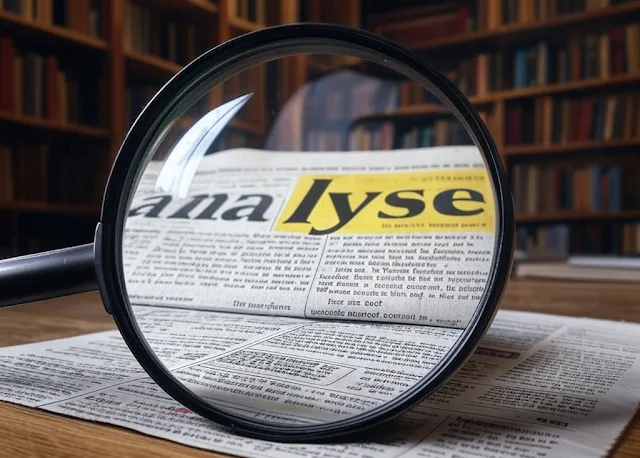Context Collapse: When Social Contexts Converge Online


 |
| Critical Discourse Analysis is a powerful method to decode language, expose hidden biases, and challenge manipulative narratives. (📷:empowervmedia) |
Critical Discourse Analysis is a research method that examines how language reflects power dynamics, ideologies, and social norms. Think of it as detective work for words. CDA digs beneath the surface to reveal hidden intentions in texts and conversations by asking essential questions: Who is speaking? What are their motives? And how does their language shape our perceptions? This approach is especially useful today, as the digital era has transformed how messages are crafted and consumed. Research shows that CDA can help unmask biases and deconstruct persuasive language in digital media.
The modern digital landscape is flooded with an array of messages — from reliable news to blatant misinformation, disinformation, and propaganda. Genuine information is supported by verified data and rigorous research, while misinformation comprises inaccurate details shared without harmful intent. In contrast, disinformation is deliberately crafted to deceive, and propaganda uses biased language to promote a particular agenda. CDA provides the analytical framework to untangle these threads by focusing on language, context, and intent. For instance, a sensational headline may be designed to evoke strong emotions rather than to inform, and CDA reveals the subtle cues that signal manipulation. Recent studies confirm that CDA can significantly enhance media literacy by enabling individuals to critically assess online content.
Imagine encountering a social media post with the headline, "Scientists Expose the Big Lie Behind Climate Change". Such a statement is provocative and loaded with emotion. Using CDA, one would first scrutinise the source — is it a reputable outlet or an obscure blog? Next, the language itself is analysed: emotive terms like “expose” and “big lie” are designed to provoke rather than clarify. By cross-referencing with other sources and verifying the data, a discerning reader can identify whether the content is fact, misinformation, or even propaganda. This analytical process transforms passive reading into an active interrogation of the message. Empirical research highlights that individuals trained in CDA techniques are better equipped to spot manipulative narratives online.
 |
| (📷:lancaster2.home.blog) |
CDA is not solely about detecting false information; it also uncovers the power structures embedded in everyday communication. For example, when a political leader asserts, "We must act now to preserve our way of life", such language can mask complex policies behind simplistic urgency. CDA encourages us to ask: Who benefits from this rhetoric? Who is being excluded? By revealing these hidden power dynamics, CDA deepens our understanding of how language influences public opinion and shapes societal norms. Interdisciplinary research has shown that uncovering these dynamics can lead to more balanced and inclusive public debates.
At its core, CDA is a tool for empowerment. When communities learn to question and analyse the messages they encounter, they gain the skills needed to challenge false narratives and engage in informed discourse. Media literacy is more than just the ability to read — it’s about understanding and interpreting the myriad influences that shape our information environment. By adopting a CDA mindset, individuals can step outside their echo chambers, seek diverse perspectives, and make decisions based on evidence rather than emotion. This empowerment is essential in an age where eight in ten Americans express concern over misinformation, and a growing number are actively seeking ways to verify what they read. These trends underscore the importance of incorporating CDA into media literacy initiatives.
Incorporating CDA into daily life doesn’t require advanced degrees — just a curious and critical mind. Start by questioning everything: Who wrote this article? What might they be trying to achieve? Evaluate the language: Are there loaded words designed to elicit a strong reaction? Verify the evidence by cross-checking facts with trusted sources and fact-checking websites. Over time, these practices will become second nature, strengthening your ability to sift through the digital noise and discern what is genuine from what is not. Studies indicate that even modest engagement with CDA techniques can lead to significant improvements in media literacy skills.
 |
| CDA digs beneath the surface to reveal hidden intentions. (📷:empowervmedia) |
⭐⭐⭐
Comments